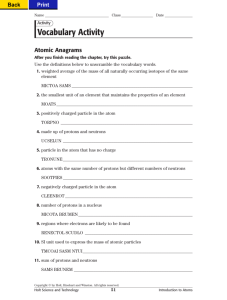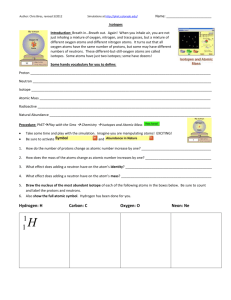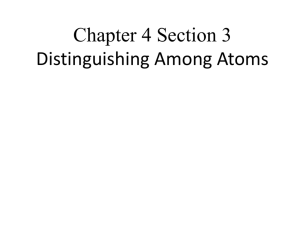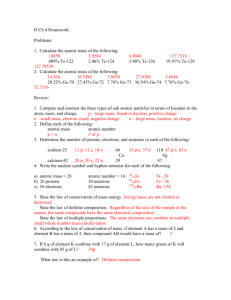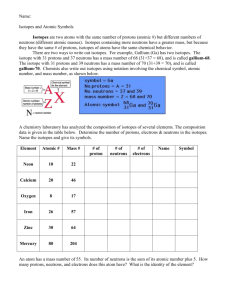Test #3 Review
advertisement
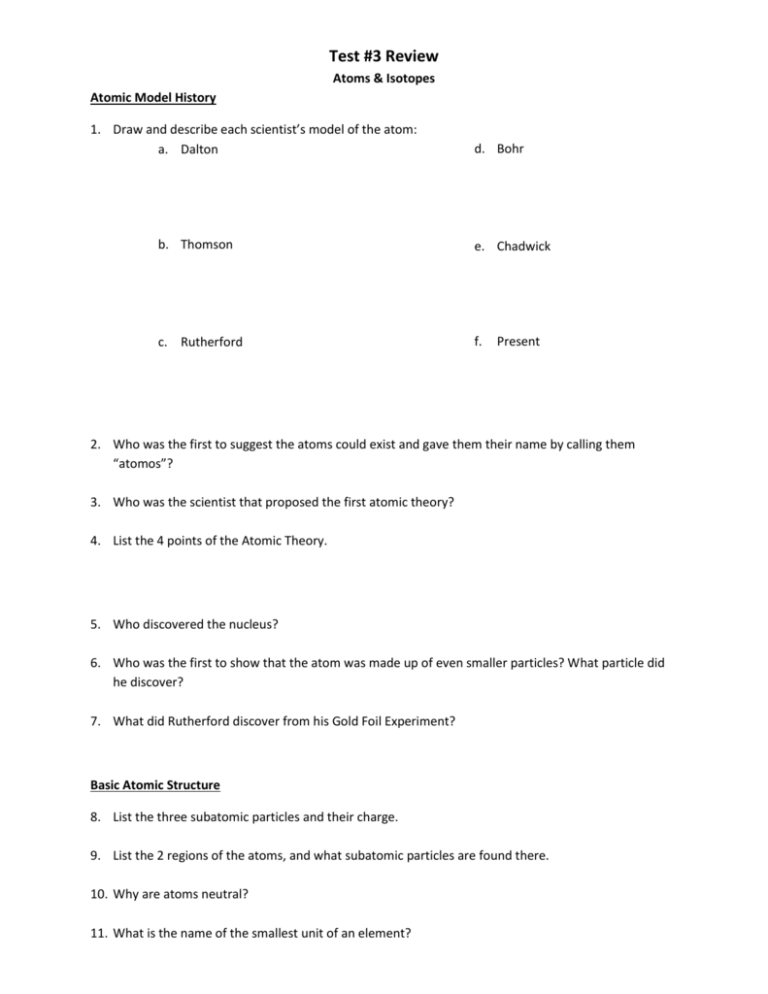
Test #3 Review Atoms & Isotopes Atomic Model History 1. Draw and describe each scientist’s model of the atom: a. Dalton d. Bohr b. Thomson e. Chadwick c. Rutherford f. Present 2. Who was the first to suggest the atoms could exist and gave them their name by calling them “atomos”? 3. Who was the scientist that proposed the first atomic theory? 4. List the 4 points of the Atomic Theory. 5. Who discovered the nucleus? 6. Who was the first to show that the atom was made up of even smaller particles? What particle did he discover? 7. What did Rutherford discover from his Gold Foil Experiment? Basic Atomic Structure 8. List the three subatomic particles and their charge. 9. List the 2 regions of the atoms, and what subatomic particles are found there. 10. Why are atoms neutral? 11. What is the name of the smallest unit of an element? 12. What particle(s) make up the atomic number? 13. What particle(s) make up the mass number? 14. Draw Bohr Models for the following elements: a. Lithium b. Sulfur Valence e : Valence e-: c. Potassium Valence e-: d. Argon Valence e-: Isotopes 15. How are isotopes the SAME? 16. How are isotopes DIFFERENT? 17. What is the difference between mass number and average atomic mass? 18. How can you determine if an atom is the most common isotope? 19. Write the following isotopes in nuclear notation: a. Carbon – 14 b. Iron – 56 c. Atom that has 13 protons and 15 neutrons 20. Element A has 8 protons and 7 neutrons and element B has 8 protons and 8 neutrons. Are these isotopes or different elements? Why? 21. What is the mass number of an isotope that has 19 protons and 21 neutrons? What element is it? 22. Find the average atomic mass from the following atoms: a. 15% of 55Fe, 85% of 56Fe b. 95% of 14N, 3% of 15N, 2% of 16N


